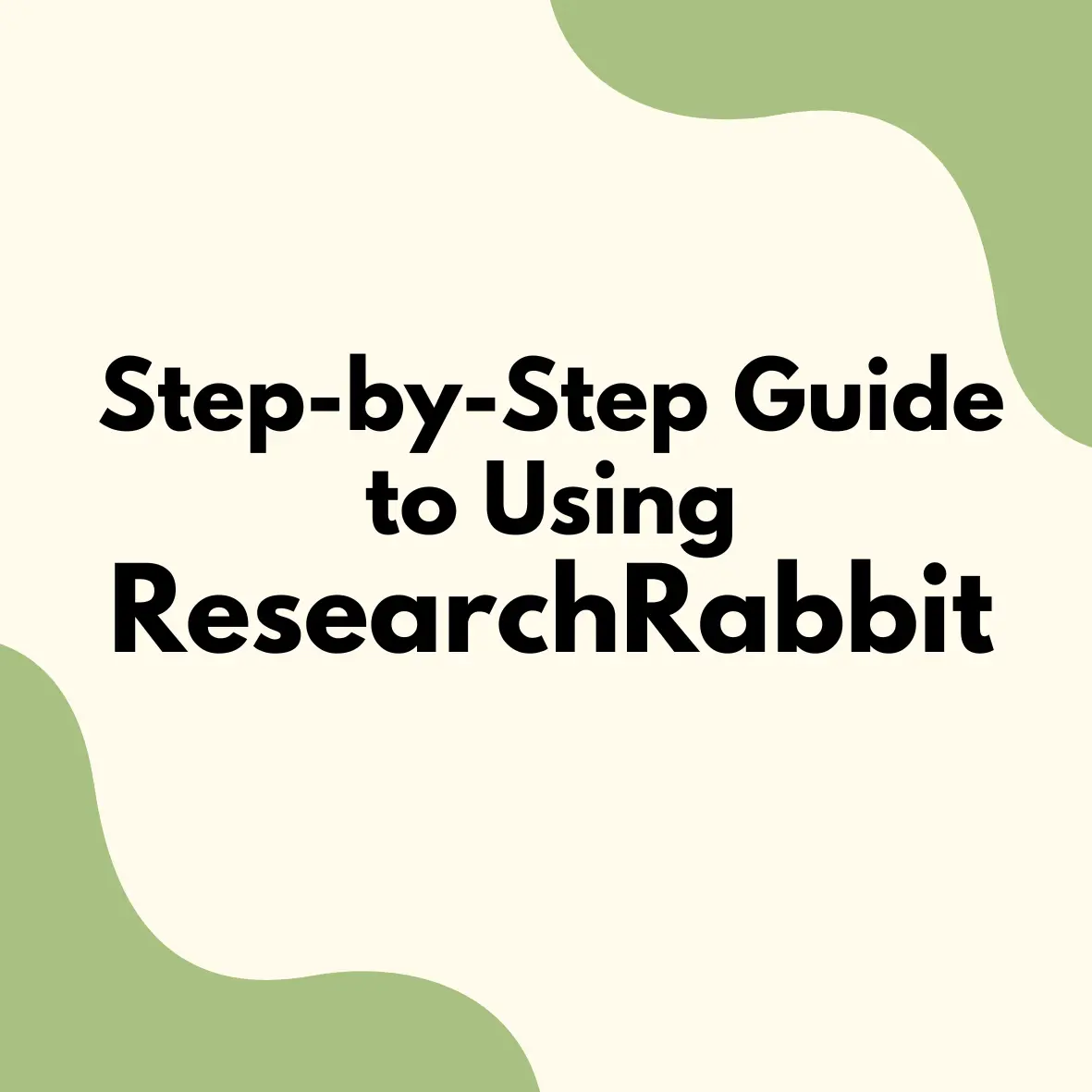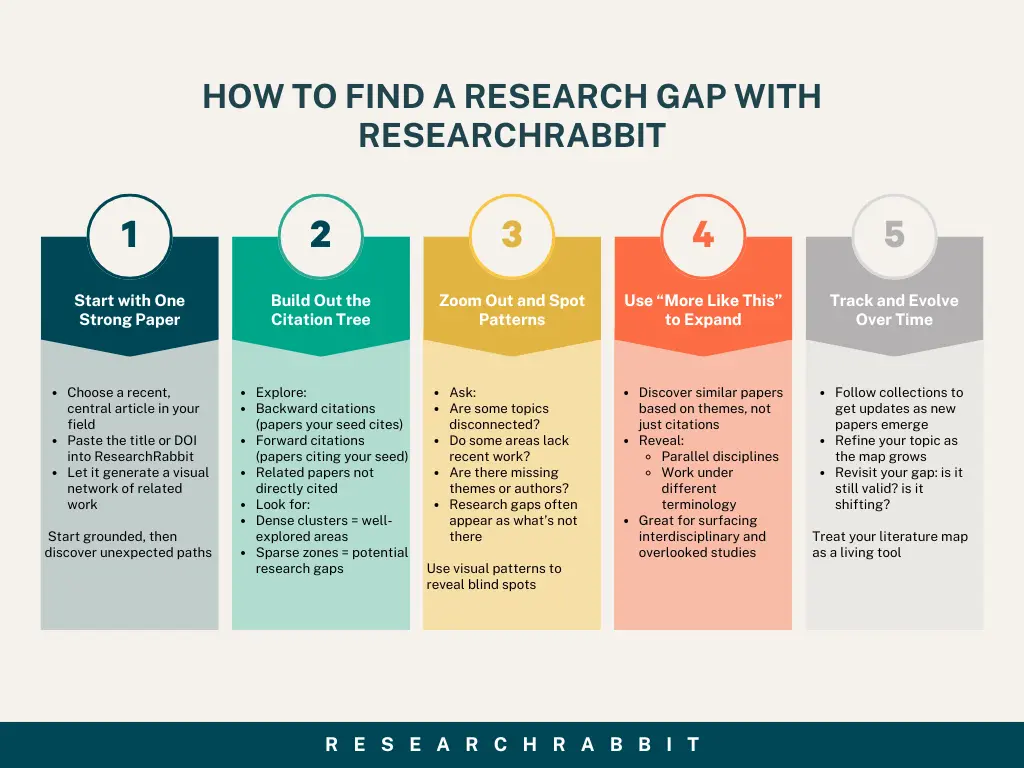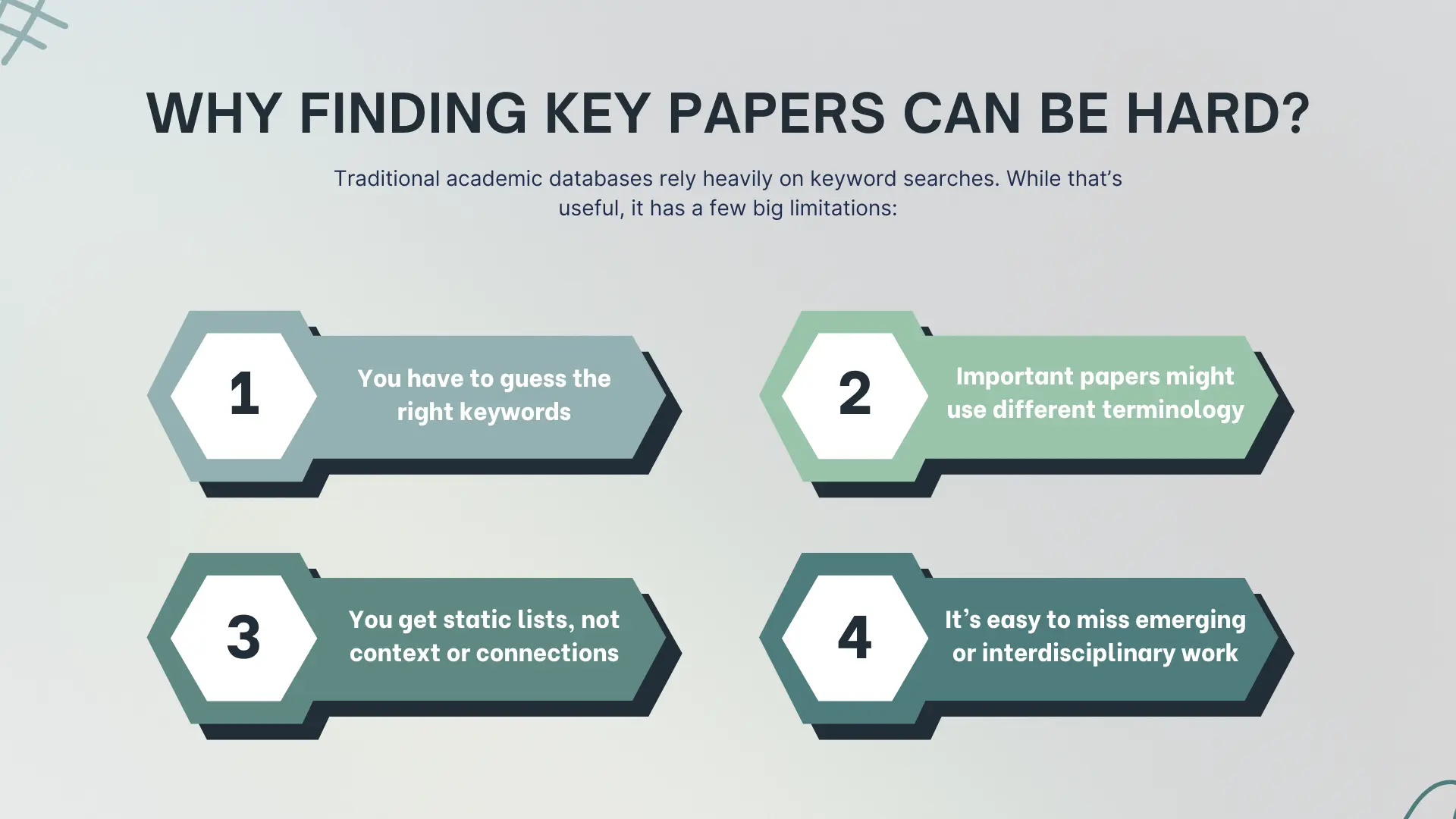If you've ever felt overwhelmed trying to find relevant research papers, you're not alone. Traditional academic databases often leave you sifting through dozens of irrelevant results or missing key studies because of rigid keyword matching. ResearchRabbit offers a different approach. With a focus on visual exploration, citation-based recommendations, and intelligent alerts, it's quickly becoming the go-to research assistant for academics, PhD students, and curious minds.
In this tutorial, we’ll walk you through how to use ResearchRabbit step by step, from setting up your first collection to exploring citation maps and following your favourite authors.
1. Start with a new collection
Every journey in ResearchRabbit begins with a collection. Think of it as your research workspace, a place where you gather, organise, and explore academic papers on a specific topic.
Once you log into ResearchRabbit, you’ll see the option to create a new collection in the sidebar. Give your collection a meaningful name, perhaps the title of your thesis, a course topic, or a keyword phrase you’re exploring.
Next, you’ll add one or more seed papers to your collection. These are starting points that define what kind of research you want ResearchRabbit to find for you. You can paste in a paper title, DOI, or URL, and the system will automatically fetch the publication details. Choosing a well-known or recent paper in your field helps improve the relevance of suggested papers.
As soon as you add a seed paper, the platform starts to work its magic.
2. Discovering related research
Now the real magic begins. Once you’ve added a seed paper, ResearchRabbit starts uncovering a network of related studies, using citation trails, co-citation networks, and topic similarity to surface papers you might not find through a typical search.
Click on any paper in your collection to open a side panel with three discovery options:
- Similar Work → Shows topic-similar papers
- All References → Papers your selected source cites (backward citations)
- All Citations → Papers that cite your source (forward citations)
You can browse through each list and click the “+” icon to add anything relevant to your collection. As you continue adding papers, ResearchRabbit refines its recommendations, making them increasingly tailored to your interests.
What starts with one or two papers quickly snowballs into a well-organised, curated list of literature, helping you understand your topic from multiple angles and uncover connections you didn’t know existed.
3. Visualize the citation map
One of the most powerful features in ResearchRabbit is its ability to help you actually see the structure of your research field. When you click the “Visualise” tab at the top of your collection, you’re taken to a dynamic, interactive map that shows how your selected papers connect through citations.
Each paper is represented as a node, and the lines between them represent citation relationships. It’s simple, but incredibly insightful. You can hover over any node to preview the paper’s title, abstract, and author information, or click into it for more details. The map is fully interactive, drag papers around to organize your view, zoom in on a cluster, or trace the path between two studies.
This isn’t just for fun, it’s a genuinely helpful way to:
- Spot influential papers that sit at the center of multiple citation lines
- Identify research gaps where connections are missing
- Understand the evolution of a topic over time through citation paths and clusters
If you’re preparing a literature review, this visual perspective can help you go beyond lists and timelines. It lets you organize your sources conceptually, which often makes it easier to build arguments, identify themes, or explain how your work fits into the bigger picture.
4. Tracking Authors and Staying Updated
As you explore papers in your collection, you’ll likely start noticing certain names pop up repeatedly, researchers who are clearly influential in your area. ResearchRabbit helps you keep track of them automatically.
Instead of manually following authors, all you need to do is add one of their papers to your collection. Once that’s done, ResearchRabbit begins tracking them for you behind the scenes. You’ll start to see them appear in the “These Authors” panel, and you’ll be notified when they publish new work or appear in relevant suggestions.
This feature is especially helpful if:
- You want to keep an eye on your supervisors, collaborators, or research group
- You’re tracking work from a specific lab or institution
- You want to stay up-to-date on rising scholars or thought leaders in your field
Instead of refreshing Google Scholar every week, ResearchRabbit does the legwork for you — quietly and consistently in the background.
5. Stay organized (and export when you're ready)
Once you start building a few collections, things can grow quickly, which is a good sign. But staying organised becomes essential, especially if you’re juggling multiple topics or projects.
ResearchRabbit gives you the flexibility to manage everything in one place. You can create separate collections for different research questions, courses, or stages of your writing. Within each collection, you can add personal notes to papers, jotting down summaries, insights, or reminders. If certain papers feel especially important, consider creating a dedicated collection (like “⭐ Priority Reads”) to group them together for easy access.
When it’s time to move from exploring to writing, whether you’re drafting a literature review, thesis chapter, or research proposal, exporting is seamless. With just a few clicks, you can download your collection in BibTeX or RISformat, ready to import into your favourite reference manager like Zotero, EndNote, or Mendeley.
Whether you’re still gathering sources or ready to start citing them, ResearchRabbit keeps your research not only discoverable but also manageable, which makes all the difference when you're deep in the writing zone and need everything right where it belongs.
Real-World Use Cases: When ResearchRabbit Makes a Difference
Whether you’re just starting a literature review or deep in the final stages of writing, ResearchRabbit can support your work at every step. Here are a few situations where it really shines:
Final Thoughts
ResearchRabbit isn’t just a tool — it’s a research companion. Whether you’re just starting out or deep into a long-term project, it helps at every stage of the process. From uncovering papers you might otherwise miss, to visualizing how a topic has evolved over time, to keeping you effortlessly updated with new research — it brings clarity and momentum to your work.
If you're working on a thesis, a journal article, or simply diving into a new field, ResearchRabbit transforms what used to be a slow, manual task into something far more intuitive, visual, and—dare we say—enjoyable.
Ready to Try It?
You can sign up for free in under a minute. Start a collection, drop in a seed paper, and see where it takes you. You might be surprised by what you discover.




%20(800%20x%201036%20px).png)





This is a big test comment on your article.